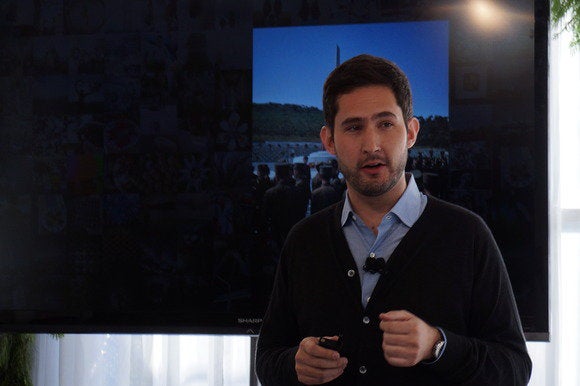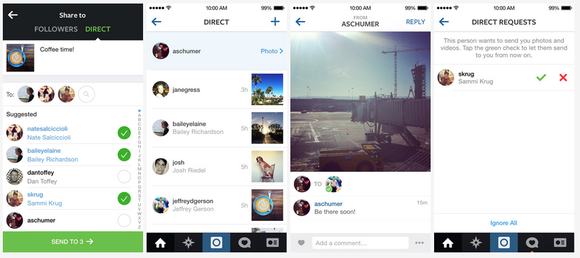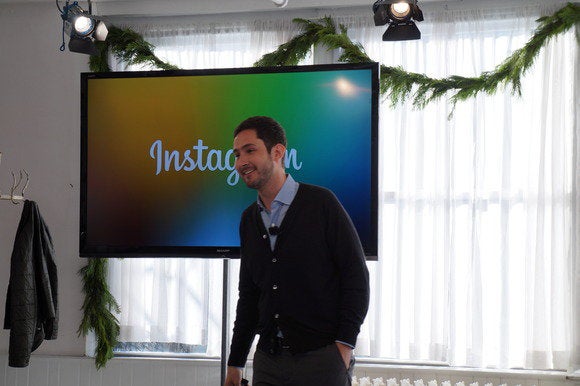Instagram is becoming very, very skilled at watching social media trends and finding ways to tailor what’s popular to the app’s own purposes. So it was with video, and so it is now with Instagram Direct, a new private messaging component.
The comparison between Direct and Snapchat is inevitable, because Instagram’s parent company Facebook has been so obvious in its pursuit of the popular ephemeral messaging app. But Instagram Direct adds a much-needed layer of privacy to the service, which has previously been all-or-nothing—you either shared everything publicly or everything privately, with nothing in between. Direct lets you send photos or videos to up to 15 of your friends at a time. You can see who likes the photos or comments on it, and groups of people can have conversations without the whole world seeing.
During a New York City event announcing Instagram Direct, CEO Kevin Systrom said Instagram has always been about photo-sharing as a form of communication—even if you’re just posting photos of your food.
“Not all photos have to be super meaningful. They can be about brunch,” Systrom said. “But I don’t think this is just brunch, it’s a visual status message. It’s about telling your friends where you are, who you’re with, and what you’re eating. It’s revolutionary. An image’s ability to communicate with the world is unparalleled.”
How it works
Instagram Direct is available as a Thursday update for iOS and Android users. The app will look the same as you scroll down through your feed, but when you swipe up, an inbox icon will appear in the top right bar, next to the Instagram logo. A red badge will appear on the icon if you have unread messages.
You can send messages to groups of up to 15 people, but Instagram won’t let you create lists or circles of friends. The app will learn which people you send photos to most often and will surface those people to the top. Your foodie friends will see your filtered brunch photos and your friends in bands will see your videos of music acts that no one else likes, and none of those will be available for the rest of the world to see. It’s a win-win for everyone.
Only people you follow will be able to send you photos or videos. If someone you don’t follow wants to send you a message, it will show up as a pending notification. Don’t want to see what that rando has to say? Tap the X to make their request go away, and you’ll never hear from them again.
Instagram Direct vs. Snapchat
Instagram’s new private messaging function won’t kill Snapchat, just as Instagram Video had little effect on Vine. The two apps differ in two significant ways. First, you can always return to the photos and videos you share using Direct—a distinction Systrom was quick to point out.
“There’s a space for ephemerality,” Systrom said, “but Instagram is about capturing and sharing the world’s moments, and what we’re best at is archiving those moments.”
You also can’t use Instagram to text your friends. Each message has to begin with a photo or video—another indication that Direct isn’t exactly trying to compete with Snapchat.
Instagram was widely expected to introduce a private messaging product, and some wondered if the company would blatantly attempt to steal Snapchat’s spotlight with disappearing texts. But social networks are simply expected to offer private messaging these days. Twitter’s recent update finally enabled users to send photos in direct messages—and moved DMs to their own tab in the menu bar.
Instagram’s last major product release was video. The social network has been working on other money-making ventures in the meantime, gingerly introducing adsthat won’t upset its devoted users or cause backlash.
Don’t worry about Instagram using Direct to put ads in your face, either. “It’s way too early to talk about advertising and Instagram Direct” Systrom said.
Your inbox is safe. For now.





